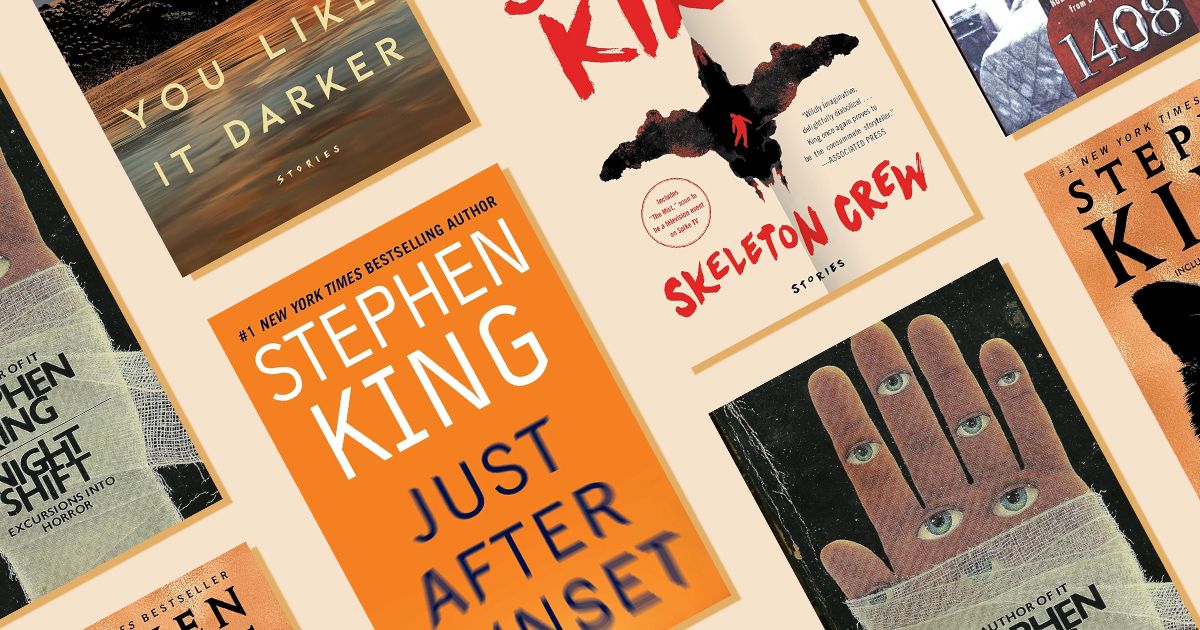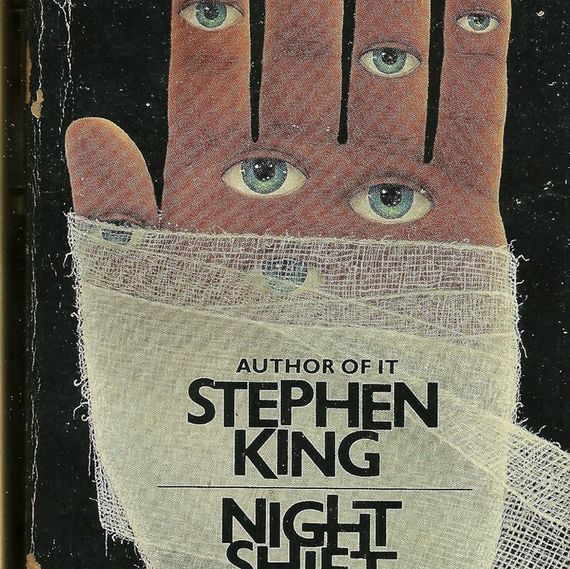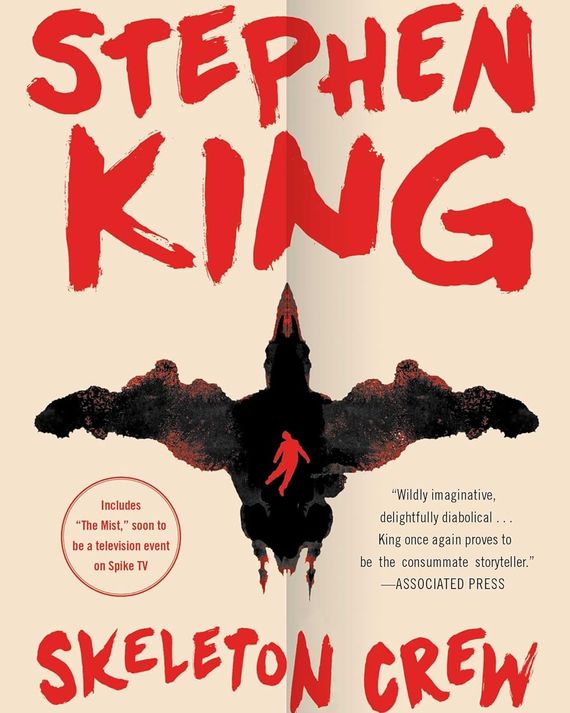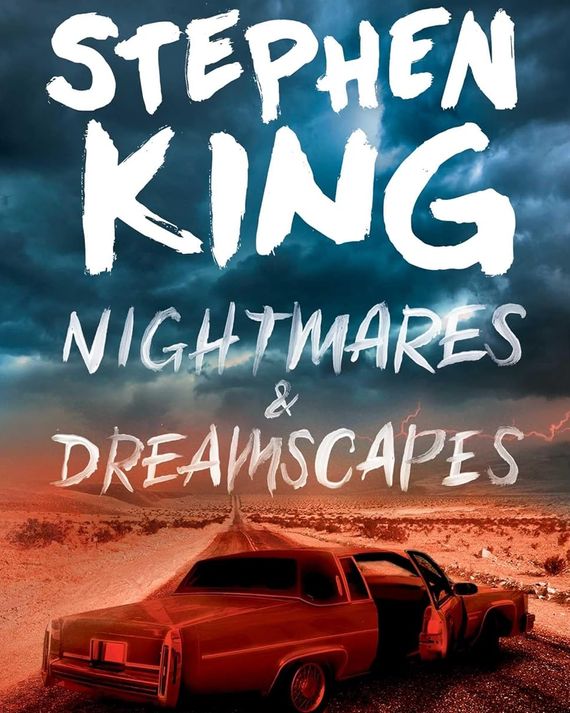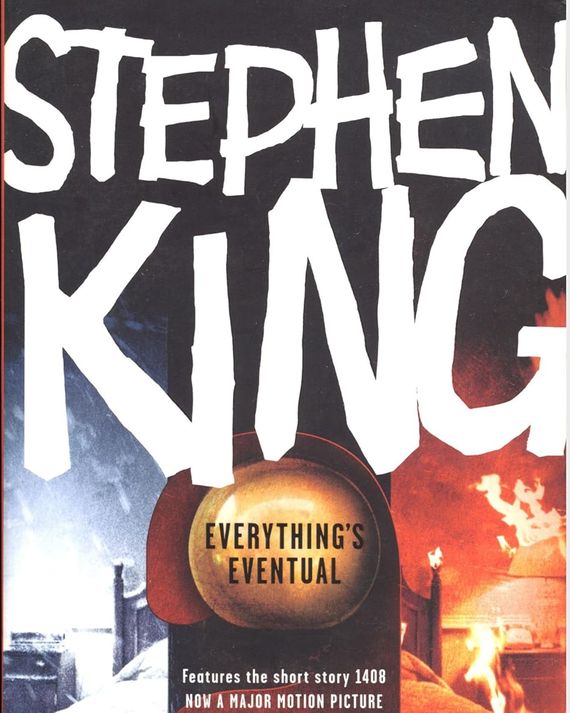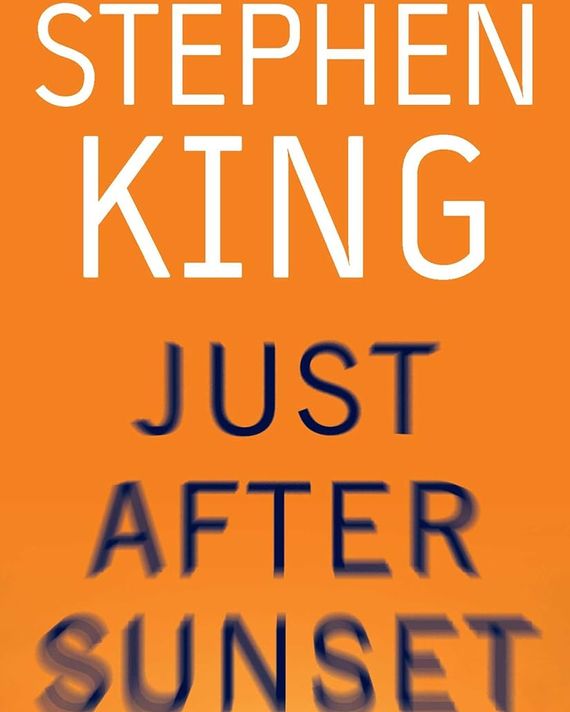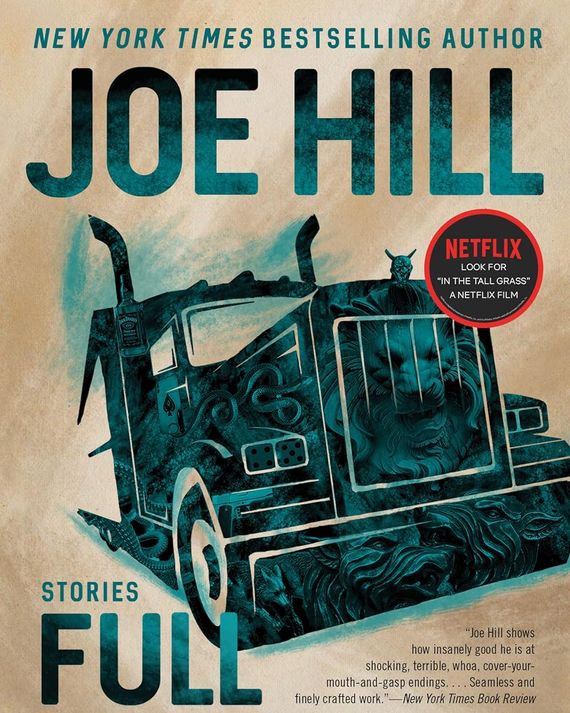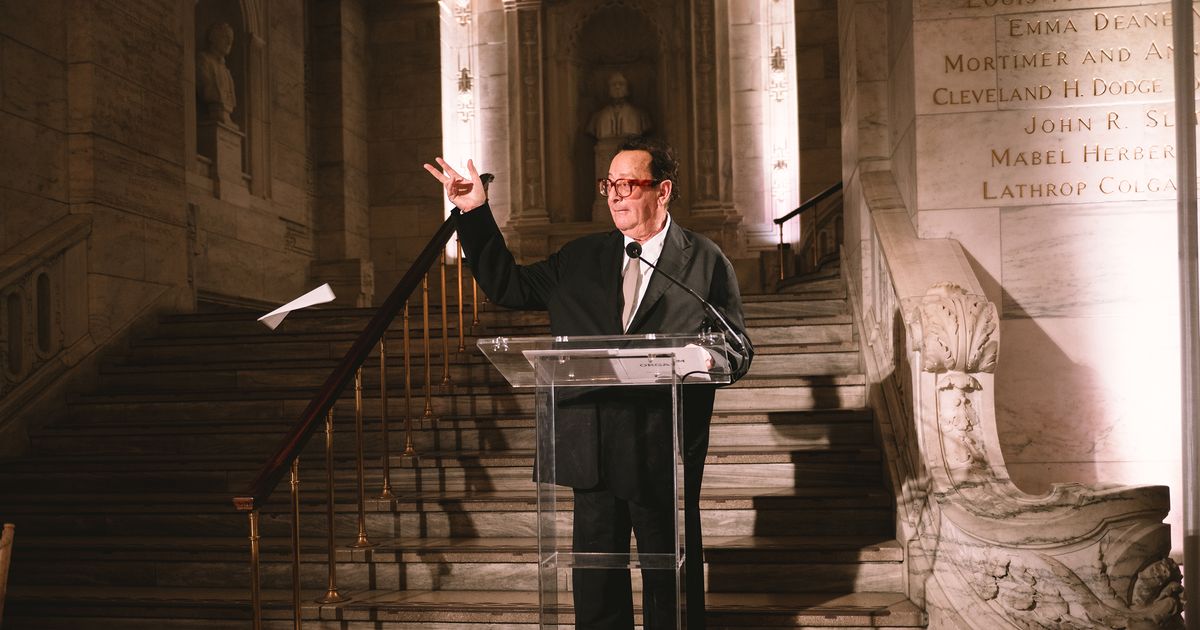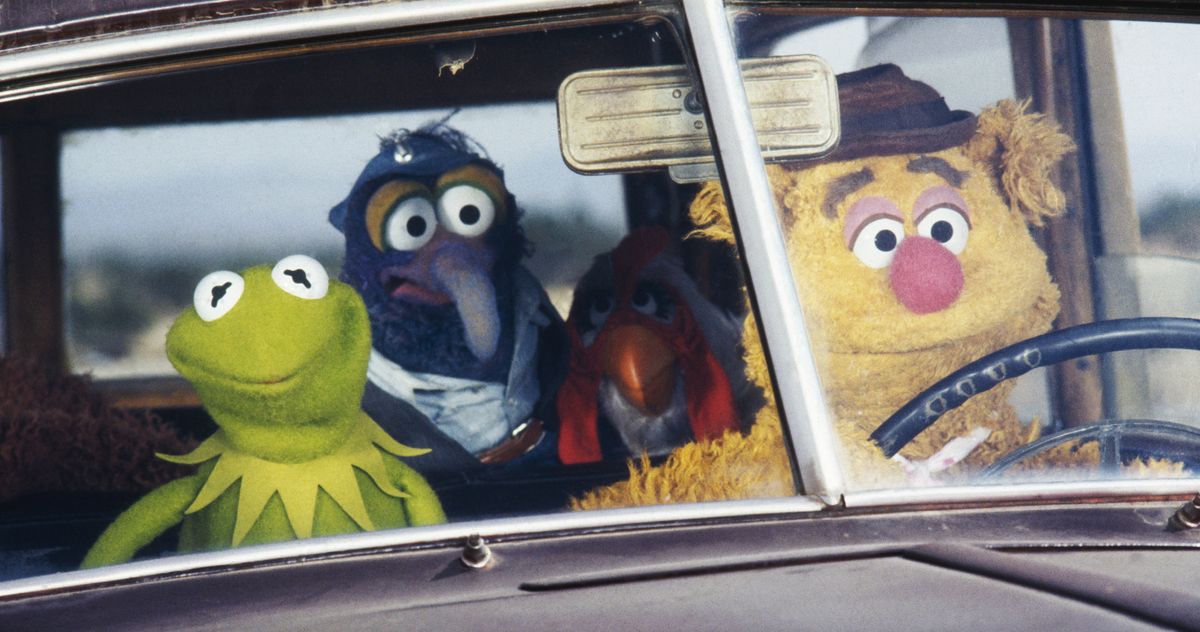Photo-Illustration: Vulture
Stephen King writes big books. Tomes, you could say. The Stand and It both top out at well over a thousand pages each, and he has dozens of other titles that aren’t far behind. One of his own villains could probably beat someone to death with them.
But not all of his stories are of lethal heft. In a 50-year career, King has written copious amounts of short fiction. It’s how he got started, in the men’s magazines of the early ’70s, and he continues to pen little pocket nightmares to this day (though they tend to be published in slightly more up-market places in recent years). King has enough stories to fill seven collections, the latest of which, You Like It Darker, is out this week. It’s classic King, stories full of heart, horror, and humanity, each riffing on that eternal question: what if? What if a single prophetic dream ruined your life? What if there was someone who could answer any question you had? What if the ghosts of little boys demanded you be their daddy?
To celebrate the new release, we’ve put together a list of King’s best short fiction. It’s hard to narrow down a selection from so many, and in order to make the job feasible, we set some rules. The story must be included in a major collection, so readers can easily find it. And it must be a short story rather than a novella. With King this is a slippery distinction, so for our purposes each story chosen is under 100 pages in length. The stories are unranked, instead listed by the date of collection. You can decide which of the below is your favorite.
There’s a lot to enjoy, regardless of your tastes. In Danse Macabre, his treatise on the horror genre, King wrote that “if I find that I cannot terrify, I will try to horrify, and if I find that I cannot horrify, I’ll go for the gross-out. I’m not proud.” All three strands are present in the list below, as well as some stories that do none of those things. Some “what ifs” can be gentler, magical … even kind.
Mostly not, though.
Many of the stories in Night Shift bear traces of the B-movies and EC comics that King consumed as a kid. “Graveyard Shift” is one of the earliest and best. It’s a straightforward creature feature about the monstrous vermin awaiting a cleaning crew in a dilapidated textile mill. The story is elevated, however, by the gritty realism of the mill environment, and the politics of 1970s labor struggle, personalized in the drifter, Hal, and Warwick, his bullying foreman. Rats and pteranodon-size bats aside, there’s also the creepy suggestion that Hal is something much more sinister than he seems. “Graveyard Shift” is an early gem that presages King’s future success in combining muscular realism and genre madness.
The genius of “The Boogeyman” is in approaching the ur-terror of childhood not from a child’s perspective but through the therapy sessions of Lester Billings, a father who has lost three kids to whatever lurks in the shadows behind the hanging clothes. No matter how many times I read it, the story’s twist ending never seems to make much sense, but the journey is dreadfully compelling, made more so because Billings is not a nice man at all. It’s possible to interpret the entire story as camouflaged infanticide, and the jury is out on whether that or a genuine monster is the scarier option. It makes no difference to the real horror at the core of the story, when Billings’s children plead to be saved from the monster, only to be ignored. A cruel story, but subtler than you might expect.
Remember that Family Guy skit where King tries to sell a killer lamp story? Well, it has a grain of truth. He’s given us numerous possessed vehicles, a demonic monkey toy and even killer joke teeth, but a possessed industrial steam ironer should be where it all went too far. This story shouldn’t work. It should be too ridiculous. But by leaning into the silliness of the premise — giving it both folkloric pedigree and human authenticity — and by really pursuing the gore-streaked potential of what such a machine would do to a human body (“It tried to fold everything!”), King pulls it off. Sure, it ranks low on sophistication, but sometimes you just really want to read about what would happen to an arm that was pulled through a rolling press.
The greatest thing about “Children of the Corn” is King’s efficient world-building. The abandoned town of Gatlin, Nebraska, is “all alone, cut off from the outside world by hundreds of square miles of rustling secret corn. Alone under 70 million acres of blue sky. Alone under the watchful eye of God, now a strange green God, a God of corn, grown old and strange and hungry.” When a bickering couple stray into that agoraphobic nightmare they disturb decades of lore and perverted Old Testament sentiment. King packs a whole novel’s worth of story into just a few dozen pages. Almost a half-century after they first graced the pages of Penthouse, those children and their mad god, “who walks behind the rows,” still feel like a vital, nightmarish caricature of America’s forgotten corners.
“The Last Rung on the Ladder” articulates decades of love in just a dozen pages, and much like the 70-foot free-fall at the center of the story, it plummets rapidly from great heights to devastating depths. When Larry discovers that his sister, Kitty, has taken her own life, he’s transported back to their childhood in rural Nebraska, and their daredevil game of diving from the top beam of their barn. An averted disaster becomes a metaphor for both their bond, and the tragedy of its severing. “The Last Rung on the Ladder” is an outlier toward the end of King’s first horror-laden collection, and the first hint of a whole other register that would come to the fore not long after, in classics like The Body, and Rita Hayworth and Shawshank Redemption.
King circles back to his fictional townships of Derry, Castle Rock, and Gates Falls like a traveling circuit judge, especially in his short fiction. The back roads to “Salem’s Lot,” however, remain less well-traveled. Since the 1975 novel ended in the localized apocalypse, King references the town infrequently, often from a car window as it speeds past a forgotten road sign. Novelty is part of what makes “One for the Road” so satisfying. A rare chance to see what became of the vampire-infested Lot. But the story also succeeds on its own merits. What begins as the coziest of horror — with reminiscences in a snowbound bar — chills in both temperature and atmosphere when a desperate father bursts through the door seeking help for his stranded family. The ensuing trip back to King’s most blighted town is a perfect coda to his early classic novel.
Ask a Constant Reader to name a King short and “The Jaunt” is likely to be at the top of their list. For good reason too. Few concepts in King’s entire catalogue are as existentially sickening as the terrible and temporal pitfalls of teleportation. Like so many of King’s early forays into science fiction, “The Jaunt” reads like Ray Bradbury in a bad mood. A masterclass in compact world-building — a 300-year history of energy crisis, the eureka of teleportation as a solution, the normalization of interplanetary travel — is mere staging for the evilest rug-pull in all of King’s work. “The Jaunt” hits you twice. First, in the skin-crawling image of the broken little boy at climax, then again, and more deeply, in the implication of what he has endured. It’s a sick, sick joke of a story that the healthy mind can’t dwell on too long. But it’s still funny.
King’s willingness to “go for the gross-out” is never made clearer than in “Survivor Type.” When surgeon and drug-courier, Richard Pine washes up on a desert island following a shipwreck, he diarizes his descent into madness, starvation, and some very radical dietary decisions. What begins with the devouring of raw bird meat descends so much further, culminating in the immortal line “they say you are what you eat and if so I haven’t changed a bit!” It’s one of many King stories that exploits horror for all its darkly comic potential, and you can almost feel him laughing at his own audacity. Supposedly, King quizzed his neighbor (a doctor) on the practicalities of the story, and oh to know what that medical professional thought at the time …
A lot of people are aware of “The Raft” as the most memorable section in George Romero’s Creepshow 2. It’s a largely faithful, schlocky adaptation, but latecomers to the source material will discover a much nastier glee in how events play out. Four teenagers find themselves on an isolated lake float, trapped by a creature that looks like an oil slick, but behaves with ravenous and agonizing intent. Everything about this setup screams B-movie — including a strain of leering misogyny — but King refuses to play by the rules. The “good” girl dies horribly, the handsome lead is killed in a manner too awful to think about, and even the reluctant hero is revealed to be anything but. It’s one of King’s purest horror stories and it goes so much harder than you probably remember.
The back roads of King’s Maine generally lead nowhere good. Usually, there be dragons. However, in “Mrs. Todd’s Shortcut” the obsessive search for the fastest route between A and B reveals the wonder waiting just beyond the next curve in the road and space-time. King’s down-home Mainer narration has never been better than it is in this whimsical, anecdotal account of small town oddity. It’s one of the gentlest stories in his canon, and a favorite amongst those who love King for more than his monsters.
King writes older women very well. Dolores Claiborne is the masterpiece, but her genesis can be traced back to this elegiac story of a 95-year-old Stella Flanders, who has never once crossed to the mainland from her island home. When she does finally decide to make the short journey across the titular “Reach,” it serves as both a metaphor for bodily death and a promise of something waiting beyond. It’s one of King’s most Maine-centric stories — packed with local color, both light and very dark — celebrating a bygone world of close community and small lives well-lived within narrow horizons.
Among all the horror, King can write crime like the best of ’em. “Dolan’s Cadillac” is a long story of very cruel and very particular vengeance, pursued by one of his middling American everymen against the mob boss who killed his wife. Much of the fun is in the procedural geometry of how to exact Dolan’s terrible fate; the tension is in whether or not the plan can work in reality. I won’t say whether it does or not, as it’s too finely tightened a knot to spoil. Decades later, Holly Gibney and the Mr. Mercedes series would become King’s full novelistic commitment to the crime thriller, but “Dolan’s Cadillac” is still his finest work in the genre.
“The Night Flier” is a procedural investigation of sorts, in which scuzzy reporter Richard Dees (reappearing from The Dead Zone) tracks a theoretical killer on a zigzagging cross-country route from one rural airport to another. It’s fun following Dees’s deductive breadcrumbs and skewering the tabloid press, before the effluence really hits the fan in a showdown with this monstrous aviator. There’s something I’m not telling you here, and it’s a whole other delicious twist to “what if.”
“The Moving Finger” reads like Raymond Carver on hallucinogens. Soaked in American normality, its world of apartments and afternoon game shows, comes entirely undone when an inexplicable digit emerges from the plughole in Howard Mitla’s bathroom. The story that follows is a delight, as Howard struggles to stretch his inelastic mind to accommodate the uncanny, and deal with it before his wife gets home. But it’s that first sight of the finger tapping on porcelain that lasts. Perhaps the most startling single image King ever wrote, it exemplifies the anxiety underpinning all of his fiction: that the fabric of the ordered world is threadbare, and the rules can be inconsistent.
The influence of H.P. Lovecraft on King’s work cannot be overstated. It’s there in the ageless otherness of Pennywise the Clown and the shambling horrors waiting in The Mist. Every time King muses on other realities beyond what he calls “the rim of the universe,” that tentacled shadow looms large. “Crouch End” is King’s most overt homage, a pastiche that relocates the weirdness of Lovecraft Country to the suburbs of North London, where mutilated cats and deformed children hint at a deeper breach in the fabric of the world. It’s a funny, uninhibited story about dreadful things, and there’s a sense that King is having a great time adding an extra wing to Lovecraft’s dollhouse.
“In the Deathroom” was first published in 1999, but it feels very much part of the cultural turn toward torture, in the wake of the War on Terror and Abu Ghraib. There is no high concept or shocking twist in this story, just the blank-eyed stare of human terror, when a reporter is subjected to enhanced interrogation by an unspecified South American regime. It’s Kafka-with-electrodes. The dawning horror that there are no right answers that will make the punishment stop prompts a fightback and an unexpected happy ending. It’s a story entirely without embellishment, but one of the meanest, leanest entries in King’s 21st-century oeuvre.
“The Man in Black” begins, “I am now a very old man and this is something that happened to me when I was very young,” and from there it’s impossible not to read on. What awaits is King’s take on the meeting-with-the-devil story. When young Gary encounters the titular black-suited fellow out in the woods, maybe it’s the smell of burned matches that surrounds him, or the hideous long fingers, “as pale as the hand of store window dummy,” or the cheery use of the word “fisherboy”— but there is something intensely disquieting about this particular entity. He looms larger than the story’s length should allow, as if he’s always capering somewhere out in King’s vast connected universe. “The Man in the Black Suit” won both the O. Henry and World Fantasy Awards, and deservedly so. It’s a story out of time, that would be at home in any era of American Gothic, alongside Irving and Hawthorne and Twain.
The Shining’s room 217 may be King’s most infamous haunted hotel room, but 1408 at The Dolphin runs it a close race. What begins with strangely canted architecture becomes a full-frontal demonic attack on reality. “1408” is a story only someone as established and unrestricted as King could get away with. It takes its sweet time getting to the room itself, luxuriating in the hotel manager’s account of the haunting, before throwing the supernatural kitchen sink at the skeptical hero. A relaxed narrative style harkens back to Victorian or Edwardian tales of nights in haunted inns, but with modern literary special effects. It’s easily King’s scariest short ghost story.
“N” is King’s most sophisticated short horror story. In 50-odd pages he weaves folk, cosmic, and psychological horror in pursuit of his most frightening idea: Madness may be contagious. A Russian-doll structure of stories within stories supports the idea, as a psychologist falls prey to his client’s delusion about a certain stone circle in Ackerman’s field, and the entity kept at bay only through obsessive, ritualistic thought. It’s an absolute masterclass in slowly crystalizing terror, clearly an inspiration for the hit horror movie Smile. King’s story is better. And for those prone to double-checking that the oven is off and the doors are locked, “N” may be the scariest he ever wrote.
Another classic “what if” moment from King. This time the question is “what if you were trapped in a porta-potty on a very hot day?” The answer is as claustrophobic and shit-smeared as you would imagine. You can almost smell this story.
Dementia is a depthless terror for King. He’s written about the “slippered pantaloon” many times, but never as poignantly, or with such rawness, as in this narrow slice of violent drama. Sanderson’s weekly lunches with his deteriorating father are a dreary cycle of menu choices and conversational cul-de-sacs. Then, without warning, the story shifts gears and accelerates, climaxing in an act of violence that is about as strangely heartwarming as a knife attack can be. You realize King has been placing the details carefully all along, like tiles in a mosaic. It’s only when you step back that you see the purpose of it all.
There’s a clear line of sight between “Children of the Corn” and “In the Tall Grass.” Both follow unwary travelers into strangely overgrown fields, both enjoy a wealth of folklore and the suggestion that what we see is only the tip of a very dark cosmic iceberg, but “In the Tall Grass” is somehow even ghastlier than its predecessor. Maybe Joe Hill pushed his dad into upping the ante, with a story that features incest, infanticide, and, worst of all, a poor dead golden retriever. Maybe it’s the father showing the son how it’s really done. Either way, King and Hill give full, furious vent to their old-school horror inclinations, and bring the best out of each other in the process.
There is no way to adequately describe “The Life of Chuck” without ruining its magic trick. It’s an experimental, illusory tale, focused on the end of the world and the mortality of a single man. Each of its three acts is anchored in a period in the life of Charles “Chuck” Krantz. An early haunting experience in Chuck’s grandparents’ house reads like vintage King. A vignette on a midwestern city street is the writer at his most romantic, and the dystopian landscape that the older Chuck navigates finally gives way to something stranger still. When all finally becomes clear, all you can do is put the book down for a moment, shake your head and think “have I got this right?” Then you smile. A movie is underway from Mike Flanagan, currently the foremost adapter of King’s imagination (Doctor Sleep, Gerald’s Game). It should be splendid.
This one takes some careful treading around, as it’s brand new, and probably the most hyped of the stories in King’s latest collection. It would be a crime to spoil it. “Rattlesnakes” is a sequel (of sorts) to 1981’s Cujo, though there is no trace of a monstrous St. Bernard. Equally, snakes are not as big a threat in the story as you may expect. Instead, we reconnect with Vic Trenton — the husband and father of Cujo’s unfortunate Donna and Tad — as he grieves alone on an isolated Florida key. There, he becomes embroiled in the mystery surrounding a sudden death, and a lingering tragedy from decades before. That’s all I’m willing to say here, except that King lets a particularly insidious idea of haunting loose inside our heads. This is one of his most striking engagements with the malign supernatural in quite some time.
King has a fondness for strange men who seem to exist just beyond the skin of our reality (see “The Man in the Black Suit” and the Yellow Card Man in 11/22/63). The Answer Man is very much of that brotherhood. He appears to Phil Parker on three occasions, offering to answer any question posed to him, a semi-Faustian pact that blends older traditions with a flavor of American rural gothic, as if Mark Twain had taken a stab at a fairy tale. It’s the kind of otherworldly realism that King has always excelled at, but it benefits from his now senior perspective. There is no supernatural horror here, only the sediment of loss and sadness that accumulates over any long life.




